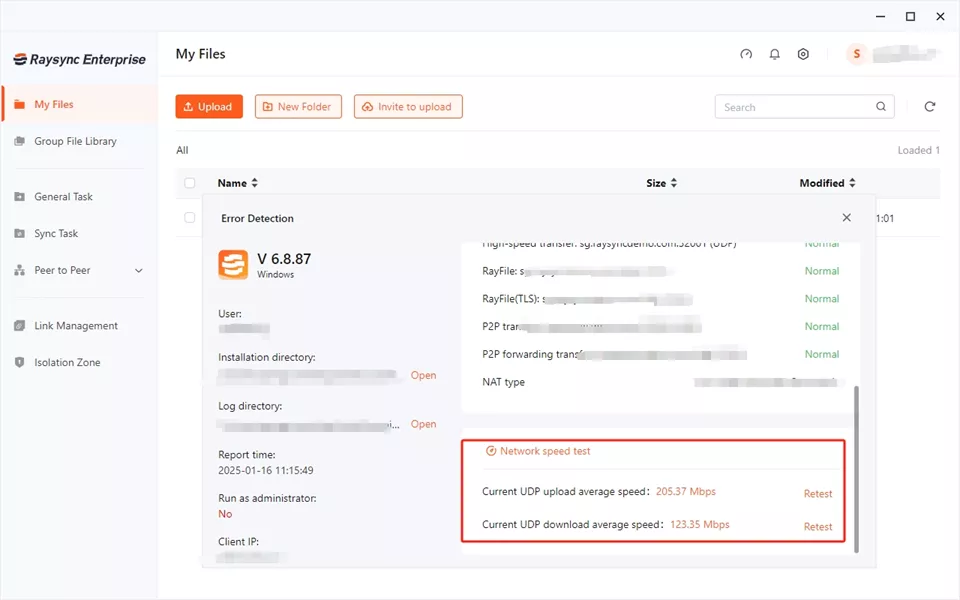Guide: How to Rsync Large File [Comprehensive Guide]
February 7, 2025Ever tried transferring a massive file with Rsync and felt like it was taking forever? We've all been there. Dealing with large files can be a real headache, especially when you're trying to sync them efficiently.
That's why we've put together this comprehensive guide. We'll walk you through everything you need to know about Rsyncing large files, from the basics to some seriously helpful tips and tricks.

How to Rsync Large File with Little CPU and Bandwidth
Transferring large files can sometimes bog down your system, consuming significant CPU and network bandwidth.
Here is how you can optimize Rsync for large files transfers more efficiently:
Use --partial and --append-verify: These options allow interrupted transfers to resume without restarting, saving time and resources.rsync --partial --append-verify source_file destination_path
Limit Bandwidth with --bwlimit: Prevent Rsync from hogging your network by setting a bandwidth limit. For example:
rsync --bwlimit=1000 source_file destination_path
Compress Data with -z: Enable compression to reduce the size of transferred data, especially for text files.
rsync -z source_file destination_path
Split Transfers with --chunk-size: Break large files into smaller chunks for smoother transfers. (This requires additional scripting.)
By implementing these strategies, you can significantly reduce CPU and bandwidth usage, ensuring a seamless file transfer experience.
How to Rsync Split Large Files Faster
Splitting large files into smaller parts can make Rsync large file transfers more manageable and less prone to interruptions.
Here’s how to split and transfer large files efficiently:
Split the File: Use the split command to divide the file into smaller chunks.
split -b 1G large_file part_
This command splits the file into 1GB parts named part_aa, part_ab, etc.
Transfer Each Chunk: Rsync each chunk individually.
rsync part_aa user@destination:/path
Reassemble the File: Use cat on the destination system to merge the chunks.
cat part_* > large_file
Automate the Process: Combine these steps into a script for convenience.
Splitting files allows Rsync to handle transfers more efficiently, especially over unstable networks. It is a lifesaver for massive files like backups and media archives!
How to Copy Large Files with Rsync
Here’s how to transfer Rsync for large files:
Use --progress: Monitor transfer progress to stay informed.
rsync --progress source_file destination_path
Enable Compression: Save bandwidth and speed up transfers.
rsync -z source_file destination_path
Set Bandwidth Limits: Avoid overloading your network.
rsync --bwlimit=2000 source_file destination_path
Resume Interrupted Transfers: Avoid restarting large file transfers with --partial.
rsync --partial source_file destination_path
Leverage SSH: Ensure secure file transfers.
rsync -e ssh source_file user@destination:/path
By following these steps, you can effectively transfer Rsync large files while minimizing interruptions and optimizing resources.
Rsync High-speed Alternative - Raysync Recommended
Rsync is a reliable tool for large file transfers, but its limitations, like slow speeds and complex configurations, can impact productivity. Raysync offers a high-speed alternative, designed for modern file transfer needs.
It uses patented technology for blazing-fast performance, avoiding common Rsync issues. Whether you handle massive datasets or sensitive documents, Raysync provides a seamless, secure, and scalable solution for efficient large file transfers.

Pros:
- High Speed: Accelerates large file transfers by up to 100x compared to traditional methods.
- Enterprise Security: Implements robust encryption for maximum data safety.
- Cross-Platform Compatibility: Works seamlessly across Windows, macOS, and Linux.
- User-Friendly Interface: Simplifies file transfers with an intuitive GUI.
- Smart Bandwidth Management: Dynamically adjusts bandwidth usage to avoid network congestion.
- Scalable: Suitable for both small teams and large enterprises.
Con:
- Advanced features can be an overkill for small-scale users.
Pricing Model:
Raysync offers flexible pricing with many different models:
|
Raysync Cloud |
SMB |
Enterprise |
|
|
Price |
USD $99/ Month |
USD $1,599/ Annual |
Tailored Plans |
|
Service Type |
Cloud |
On-premise |
On-premise |
|
Transfer/ Download Traffic |
2 TB |
Unlimited |
Unlimited |
|
Storage |
1 TB |
Unlimited |
Unlimited |
|
Maximum User Number |
10 |
10 |
Unlimited |
The End
Rsync handles large files reliably, but optimization is key. Our guide covers tackling CPU limits, bandwidth, and file splitting for Rsync. For a faster, easier option, consider Raysync to streamline your large file transfers. Happy syncing!
You might also like

Industry news
July 9, 2024In this blog post we will look at the top 8 powerful FileZilla alternative for Windows, Mac, and Linux.

Industry news
June 11, 2020There has been an increased buzz around what Managed File Transfer (MFT) is and how it improves security, speed, and manageability of moving large files.
![Best 6 Professional Enterprise SFTP Solutions [2025]](http://images.ctfassets.net/iz0mtfla8bmk/47Fx7SprfOdOwsdbuhz5Le/f1b38010c860010f434fe42336b7c1df/enterprise-sftp-solutions.png)
Industry news
October 16, 2024Protect sensitive files with the right SFTP solution for Enterprise. This guide compares top options for businesses, covering security, ease of use, and scalability.